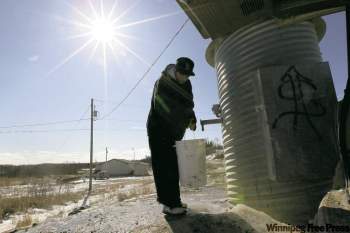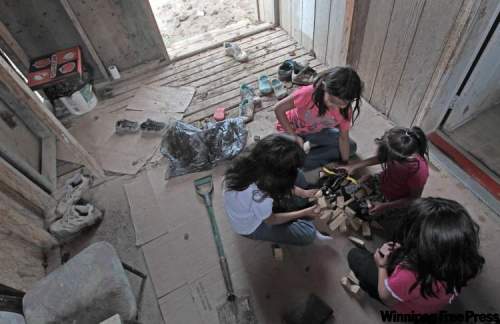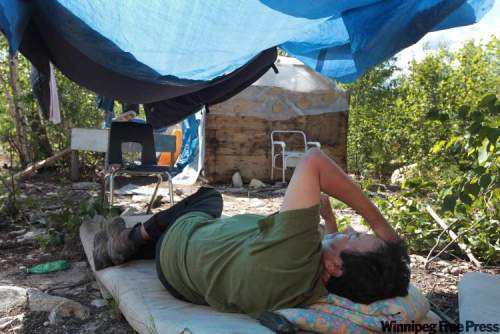Health Consequences
Water woes behind H1N1
4 minute read Thursday, Dec. 15, 2011At the height of the H1N1 flu pandemic's first wave, an unusually large cluster of victims lived in one small, isolated Manitoba reserve where most homes don't have running water.
St. Theresa Point First Nation had a wave of 175 cases of likely or confirmed H1N1 in the spring of 2009, according to a study kept secret by Health Canada until now.
"It is likely that one contributing factor to this outbreak was the lack of running water in homes," wrote Public Health Agency of Canada epidemiologist Sue Pollock. "Without running water in the home, basic hygiene practices become a challenge, especially when the standpipe (communal tap) system is not easily accessible."
Not only could residents not wash their hands at home, the communal taps that serve the reserve may have been a nexus for H1N1 germs.
Advertisement
Why the wait?
3 minute read Saturday, Nov. 6, 2010The federal government pays for water and sewer services on reserves, but only part of the health-care expenses for anyone who gets sick when those services fail. When First Nations residents get seriously ill, they’re flown out to provincial hospitals where the Manitoba government covers the bills.
That split jurisdiction could be at the root of why the problem is taking so long to fix.
Imagine if all the bills for Island Lake residents hospitalized for H1N1 flu and whooping cough and all the bills for controlling the superbug MRSA in city hospitals that treat Island Lake residents went straight to Ottawa. Maybe then Health Minister Leona Aglukkaq would look across the cabinet table at Indian Affairs Minister John Duncan and say, “Can’t you get those people running water?”
No one tracks provincial health spending in a way that would allow the Manitoba government to calculate how much the neglect of water and sewer services on reserves is costing provincial taxpayers.
Disease factory
17 minute read Wednesday, Nov. 3, 2010"We can't just expect people to be healthy... if they live in a house with 10 other people and have no running water," Manitoba's chief public health officer Dr. Joel Kettner said after the H1N1 flu pandemic swept through Island Lake in spring 2009.
Unsafe water and sanitation are the source of 85 per cent of preventable diseases globally, according to Maude Barlow of the Council of Canadians.
Nurse Florence Nightingale figured out the connection between hygiene and health 150 years ago, but what exactly are the consequences of living without tap water and flush toilets?
Research or repair?
7 minute read Preview Saturday, Oct. 30, 2010Superbugs rampant in homes without plumbing
4 minute read Preview Saturday, Oct. 30, 2010LOAD MORE




